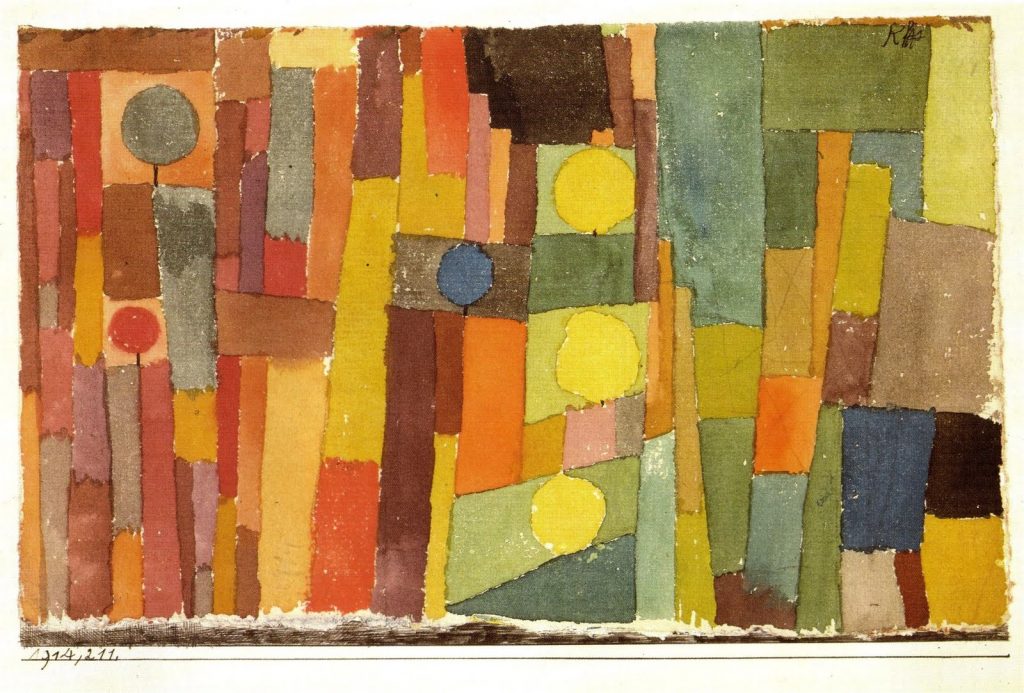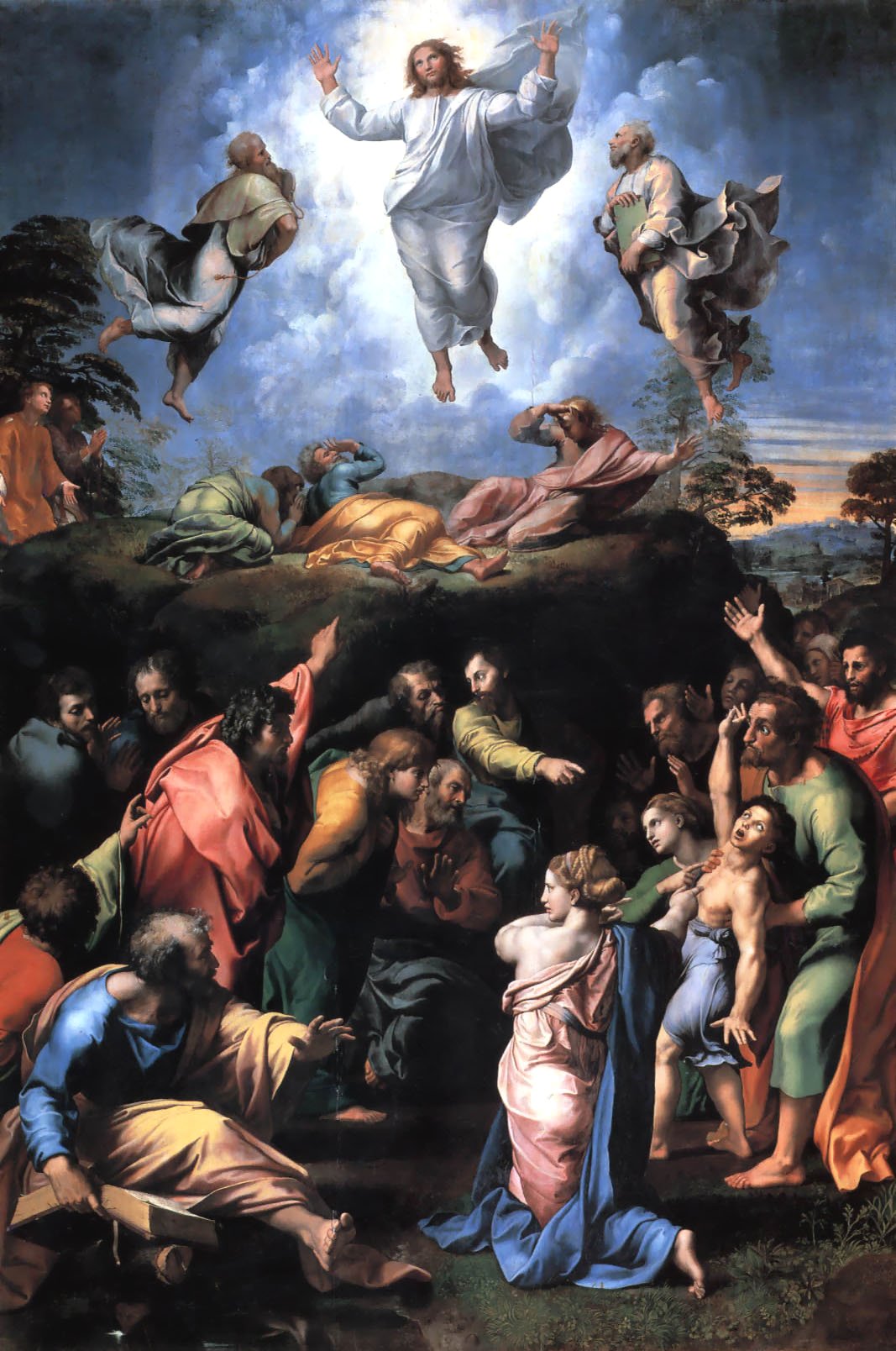Philosophy’s Use of the Visual Arts
There are undoubtedly instances of this in philosophy of art and aesthetics. It would be interesting to learn which works of art used in other areas of philosophy, too.
Bernard Williams’ use of Gauguin in “Moral Luck” comes to mind, but if I recall correctly he does not name any particular works of art of Gauguin’s, so that would not count as a proper example of what we’re looking for here.
Readers, please share examples in the comments. Include the name of the artist and the title of the specific artwork, along with the philosopher and the title of the philosophical work. Bonus points for links to images of the artwork.
(This post was inspired by a recent interview with Dennis Schmidt (Western Sydney) which covers, among other things, Heidegger’s thoughts on the painter Paul Klee.)
Note: save your examples of visual art featuring philosophical ideas or philosophers, or visual art by philosophers—we’ll cover those in different posts another time.



Mark C Taylor is Professor of the Philosophy of Religion at Columbia University and Chair of the Department of Religion and Co-Director of the Institute for Religion, Culture and Public Life. He is also Professor of Philosophy of Religion at Union Theological Seminary and the Cluett Professor of Humanities Emeritus at Williams College.
Taylor wrote a fascinating book about the artist Mark Tansey titled The Picture in Question: Marks Tansey and the Ends of Representation. One fascinating aspect of the book is that it does not contain a single image.
Taylor has also published on Vito Acconci and other artists, as well as writing a book on graves. You can find all of them via Amazon.
Taylor’s web site is:
http://markctaylor.com
Ken Friedman
Chair Professor of Design Innovation Studies
Tongji University, Shanghai &
University Distinguished Professor
Swinburne University of Technology, Melbourne
Foucault discusses Diego Velázquez’s “Las Meninas” at length in the first chapter of The Order of Things.
Heidegger talks about van Gogh’s painting of his boots in The Origin of the Work of Art. The essay is frequently mistaken for a piece in aesthetics, but it’s all about Heidegger’s philosophy and doesn’t contribute much of use to aesthetics (even the relativism was done better by others). But it does do a lot for Heidegger. This is especially obvious when you realize that he couldn’t be vothered to get basic art-historical details right, but that these miatakes are irrelevant to the point he’s making.
…but what’s the point of separating these kinds of examples from the work done in aesthetics and the philosophy of art?
Composition with Red, Yellow and Blue by Piet Mondrian, 1921 (Haags Gemeentemuseum, Netherlands) and Untitled VI by Willlem de Kooning, 1977 (Menil Collection, Houston) in New Ontologies by Andrew Pickering, sociologist, philosopher, and historian of science at the University of Exeter. He was a professor of sociology and a director of science and technology studies at the University of Illinois at Urbana-Champaign until 2007.
Abstract: In The Mangle of Practice (1995) I argued for a specific ontological vision of the world and of our place in it, a vision in which both the human and the nonhuman are recognised as open-endedly becoming—taking on emergent forms in an intrinsically temporal ‘dance of agency.’ Here I seek to enrich and extend that vision, beginning from some different places. I first discuss the paintings of Piet Mondrian and Willem de Kooning as exemplars or icons of, respectively, a Modern dualist ontology and a non-Modern mangle-ish ontology. Echoing Martin Heidegger, I argue that the Mondrianesque stance (1) is associated with projects of domination and (2) veils our true, de Kooning-like, ontological condition from us. My second example concerns the struggles of the US Army Corps of Engineers with the Mississippi River. Again, these exemplify a project of domination and control, now including scientific knowledge, that is both embedded in and conceals the flow of becoming. In the second half of the essay, I ask whether it would make a difference if we adopted a stance of self-consciously acting out an ontology of becoming. I argue that it would, drawing upon examples from the arts, religion and philosophy, but seeking to draw attention especially, and contra Heidegger, to branches of science and engineering that themselves assume an ontology of becoming. I conclude with a brief discussion of a ‘politics of experiment’ that would go with an ontology of becoming.
Freud’s “The Moses of MIchelangelo,” in Totem and Taboo and Other Works, v. 13, Std. Ed.
Walter Benjamin uses Paul Klee’s ‘Angelus Novus’ as a model for his Angel of History in his pessimistic 1940 essay “Theses on the Philosophy of History,” He writes, “Where we see the appearance of a chain of events, he sees one single catastrophe, which unceasingly piles rubble on top of rubble and hurls it before his feet […] That which we call progress, is this storm.”
Foucault uses Magritte’s ‘This is not a Pipe’ for a text of the same name. https://monoskop.org/images/9/99/Foucault_Michel_This_Is_Not_a_Pipe.pdf
If I get bonus points for a link, can I refer to a non-written work? I recently saw José Medina give a wonderful talk on epistemic activism and shared responsibility for racial violence, where Ken Gonzales-Day’s ‘Erased Lynchings’ series was used as an example. http://kengonzalesday.com/erased-lynchings/
Not sure if this is quite what you have in mind but Donald Davidson wrote an essay for a catalogue to accompany a Robert Morris exhibition: “The Third Man”, reprinted in Truth, Language, and History (OUP, 2005). In that essay, Davidson explores (tentatively!) connections between his philosophical work and Morris’s sculptures.
Relatively early in the Birth of Tragedy, Nietzsche refers to Raphael’s Transfiguration as emblematic of both the Apollonian and Dionysian. Here’s a link to an image of the painting:
Husserl engages with Durer’s engraving Knight, Devil and Death in a decisive passage in Ideas I.
Heidegger is also known for some brief writings on Klee, Cezanne, and Chillida. In addition his book On the Way to Language contains a focused discussion of a shot in the film Rashomon.
An example from classical thought that came to mind for me was the passage in the Symposium when Alcibiades compares Socrates to the “masks of Silenus.”
Oh. I forgot that Sextus Empiricus uses the story of Apelles’s attempt to paint Poseidon’s creation of the world (esp. the wave-foam horses) to talk about ataraxia.
Again, though… what’s the point of separating all this out from what philosophers of art/aestheticians are doing? I can’t help but worry that the exercise is motivated in part by a misunderstanding of what they do. It’s not like what they do is just sit around and talk about pictures, effectively just generating more art criticism or history. They’re using artworld cases to think through problems in other areas of philosophy, to test theories and to see if thinking about artworld cases can shed light on broader issues.
Zizek uses Kasimir Malevich’s “Black Square on White Surface” in order to convey the way the aesthetic field gets reduced to its basic elements in modernist art in Chapter 3 of _The Fragile Absolute_.